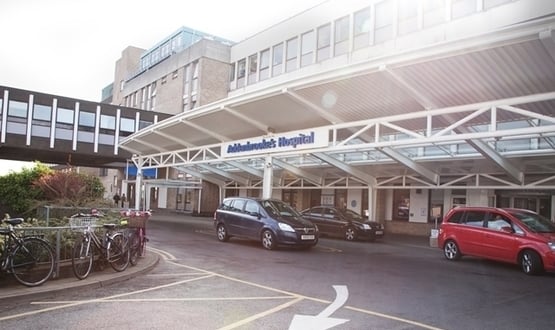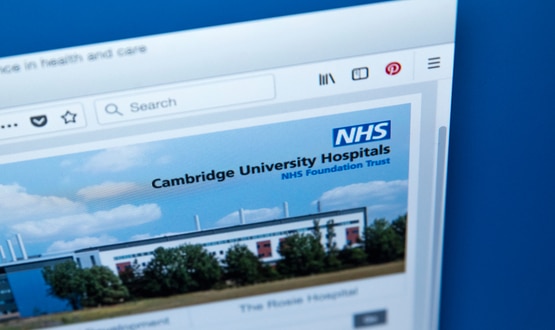How Cambridge University Hospitals’ NHS FT saved £2.6m
- 23 June 2020

Cambridge University Hospitals (CUH) NHS Foundation Trust has managed to save £2.6million and decreased theatre turnaround times by three minutes per case. Dr. Afzal Chaudhry, CMIO at the trust and Debbie Pope, country manager, UK & Ireland, for Capsule Technologies reveal how this was done.
The National Health Service (NHS) budget continues to climb—and is likely to grow even further due to the massive costs attributed to the Covid-19 pandemic. Although NHS Trusts and Foundation Trusts have been promised £5 billion from the Treasury already, after the public health crisis has subsided, Trusts will still be keen to explore ways to reduce costs while continuing to deliver high-quality patient care.
Helping physicians, nurses and other staff work more efficiently creates a significant opportunity to reduce spending and improve the Trusts’ financial performance, even with growing patient care demand. In addition, eliminating repetitive and unnecessary tasks can help improve clinicians’ working experience, offer more time with patients, and enable higher quality care and improved outcomes, which can also reduce overall healthcare spending.
Cambridge University Hospitals (CUH) NHS Foundation Trust is one example of how a focus on efficiency and streamlining provider workflows have reduced costs, while also generating additional benefits. Its strategy, which involved a complete transition from a paper to an electronic patient record (EPR) system and a comprehensive medical device integration (MDI) effort, yielded millions of pounds in annual cost savings, increased productivity in its surgical theatres, and improved the experience of providers and patients.
A Single Source of Truth
CUH is one of the most well-known healthcare trusts in the UK. Comprised of Addenbrooke’s Hospital and The Rosie Hospital, CUH’s vision is to improve patients’ quality of life through innovative and sustainable healthcare.
As part of that vision, CUH embarked on an improvement initiative toward becoming a completely paperless organization, which involved implementing its EPR. At the same time, CUH wanted to develop a single solution for medical device connectivity and data management to inform clinical decision-making – from the intensive care unit and surgical theatres, to the general ward and post-acute care areas.
The Trust wanted to use device data for multiple purposes – first to automate its EPR documentation, which when created manually was time-consuming, distracting for providers, and potentially a source of errors. CUH then wanted to supply device data to clinical research systems and beyond. This required a system that could capture inbound connections, but also parse the outbound data into multiple, customisable feeds to meet the requirements of other systems.
That is why in parallel with the EPR implementation, CUH chose a medical device integration platform to capture and standardize its device data and make it actionable for its multiple purposes. This included integrating cardiac monitors, ventilators, anesthetic devices, and C02 monitors into CUH’s EPR. More than 200 patient beds were connected by the integration. The phased implementation approach began with the intensive care unit and surgical theatres. Phase No. 2 expanded MDI across the remaining high acuity care areas, the A&E department, and additional device types, and then expanded the use of data into clinical research.
The vendor-neutral platform CUH chose captures and contextualizes medical device information, providing timely patient updates at the point of care. MDI has been especially crucial in assessing a patient’s condition in the face of the pandemic. Expanded and deeper clinical context speeds provider comprehension, which improves staff communication and decision making.
With the first two phases of the implementation complete, CUH’s future integration plans include the general care wards, and the use of data for decision support analytics.
Efficiency and Productivity Increase
As a result of the EPR and MDI implementation, CUH is experiencing improvements in operational efficiency, accuracy of captured information, and time reallocation to activities supporting patient care quality and safety. For example, because much of the clinicians’ charting has been automated, overall clinical documentation is faster and more accurate. CUH estimates its documentation time savings in Critical Care is equivalent to £2.6 million in annual staff time. Meanwhile, CUH increased the number of anesthesia theatre cases by 225 a year and decreased turnaround time by three minutes per case.
Less quantifiable, but equally if not more important, the EPS and MDI initiative improved patient safety through a returned clinician focus on direct patient care, not on documentation. With access to a single source of truth, the number of appropriate clinical interventions CUH tracked increased while treatment delays decreased, which also tends to increase care quality. The improved data availability accelerates EPR documentation and clinical research, but in the future, will also drive analytics and clinical decision support for such initiatives as the National Early Warning Score (NEWS2) to help providers assess and proactively intervene with its acutely ill patients.
For its digital innovation efforts, CUH was awarded HIMSS EMRAM Stage 6 status in 2015 (which was revalidated in 2018). Moreover, MDI was a key factor in CUH’s designation in 2017 as an NHS Global Digital Exemplar.
Continuous Improvement
As CUH continues to expand and strengthen its digital strategy into other care areas, the demand for medical device information as a decision support and clinical intervention resource will grow. To accommodate this demand, CUH is currently evaluating analytics within the medical device integration system that can help ensure connectivity uptime, improve battery management, and optimise device utilisation.
Such optimisation is likely to further reduce the Trust’s unnecessary costs, save additional time for providers, and further distinguish the organization as a leader in digital innovation and high-quality care across the NHS.




3 Comments
Well done. Sandwell & West Birmingham went live with medical device integration last year and Oxford did it a little while ago. This definitely feels like a technology that’s ready for the mainstream
free minutes of Turnaround Times (TT) is awesum and all involved deserve a pat on the back, I have to be honest, I think sum of the people at CUH should be running the NHS NOW, however clearly improvements in efficiency can only come from insight from DATA NOW ! all @ CUH R happy to share, but efficient technical management of, not collection, of the DATA is criticall … GO DIGITAL !
So have £2.6m of staff costs been removed from budgets or is this is a theoretical example? Sounds like the latter
Comments are closed.